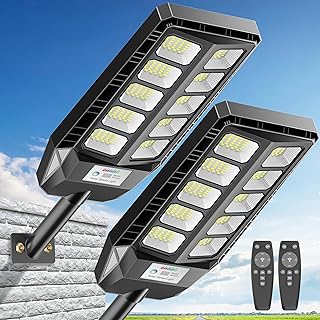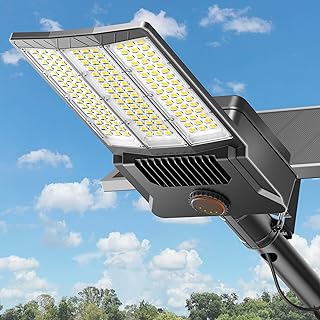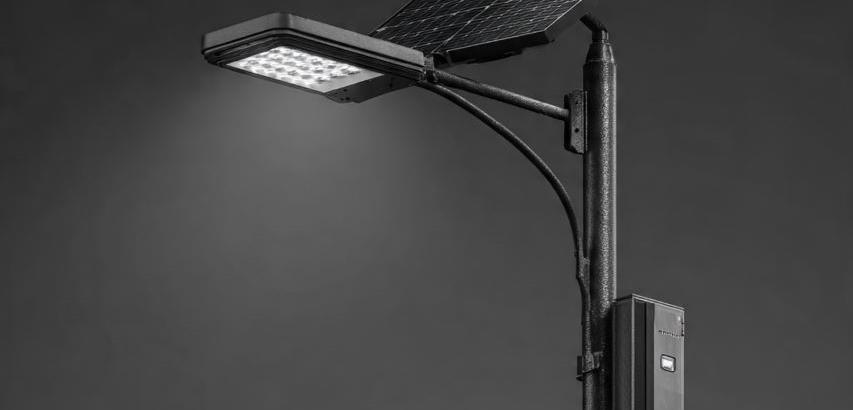Outdoor Solar Street Lights are standalone, self-sufficient lighting systems that harness the sun's energy to provide illumination for streets, pathways, parking lots, parks, and other public spaces. They represent a pivotal technology in sustainable urban and rural development, offering a clean, cost-effective alternative to traditional grid-connected lighting.
How They Work: The Core Principle
The fundamental operation of a solar street light follows a simple daily cycle:
Charging (Daytime): During the day, photovoltaic (PV) solar panels convert sunlight into direct current (DC) electricity.
Regulation & Storage: This electricity is managed by a solar charge controller, which regulates the voltage and current to safely charge the integrated battery. The controller prevents overcharging and over-discharging, which are critical for battery longevity.
Discharging (Nighttime): At dusk, a light sensor (photocell) automatically detects the absence of light and triggers the system to turn on the LED luminaire.
Illumination: The stored energy in the battery powers the high-efficiency LED lights throughout the night, providing consistent illumination.
Automatic Shut-off: At dawn, the photocell detects daylight and automatically switches the light off, and the cycle begins again.
Key Components and Their Functions
Solar Panel (Photovoltaic Module):
Function: The primary energy harvester. Its efficiency and size directly determine how much energy is available for charging.
Types:
Monocrystalline Silicon: Highest efficiency (15-24%), performs better in low-light conditions, and has a longer lifespan. More expensive.
Polycrystalline Silicon: Slightly lower efficiency (13-16%), recognizable by its blue, speckled appearance. Cost-effective.
Thin-Film: Less common, flexible, but lower efficiency and shorter lifespan.
Rechargeable Battery:
Function: The energy reservoir that stores electricity for use at night. This is the component most critical to the system's performance and lifespan.
Types:
Lead-Acid (Gel/AGM): Traditional, lower upfront cost, but heavier, bulkier, and have a shorter cycle life (3-5 years).
Lithium-Ion (especially LiFePO4 - Lithium Iron Phosphate): Modern standard. Lighter, more compact, higher depth of discharge (DoD), longer lifespan (5-10 years), and better performance across a wide temperature range. More expensive initially but more cost-effective over time.
LED (Light Emitting Diode) Luminaire:
Function: The light source. LEDs are chosen for their high luminous efficacy (lumens per watt), long lifespan (50,000+ hours), durability, and excellent color rendering.
Design: Often designed with optics (lenses or reflectors) to direct light onto the roadway or pathway, reducing light pollution (e.g., "cut-off" or "semi-cut-off" fixtures).
Solar Charge Controller:
Function: The brain of the system. It manages the power flow between the solar panel, battery, and LED light.
Types:
PWM (Pulse Width Modulation): Basic, economical. It simply switches the connection between the panel and battery on and off to regulate charging.
MPPT (Maximum Power Point Tracking): Advanced and highly efficient. It continuously finds the optimal voltage at which the solar panel can produce maximum power, increasing charging efficiency by up to 30% compared to PWM, especially in cold weather.
Pole and Hardware:
Function: Provides structural support. The pole houses the battery and controller in an enclosed compartment (usually at the base or behind the panel) and is designed to withstand wind loads and environmental conditions.
Light Sensor (Photocell) & Smart Controls:
Photocell: Provides basic automatic on/off functionality.
Smart Controllers: Advanced systems may include PIR (Passive Infrared) motion sensors to dim the light when no movement is detected and brighten it when activity is sensed, saving significant energy. Some can be managed remotely via GSM/RF for monitoring and control.
Advantages and Benefits
Energy and Cost Savings: Eliminates electricity bills entirely. No trenching or cabling costs, leading to lower installation expenses.
Environmentally Friendly: Zero carbon emissions from operation. Uses a renewable, clean energy source.
Energy Independence & Grid Resilience: Operates entirely off-grid. Immune to power outages, making it highly reliable for critical and remote areas.
Easy and Quick Installation: Requires only a concrete foundation for the pole. This makes deployment fast and minimizes disruption.
Low Operational Maintenance: With no external wiring and long-life components (especially LEDs and LiFePO4 batteries), maintenance requirements are minimal.
Enhanced Safety: Improves visibility and security in public spaces without the risks associated with high-voltage grid wiring.
Limitations and Considerations
Higher Initial Investment: The upfront cost for a quality solar street light is higher than a conventional grid-connected fixture.
Weather Dependency: Performance can be affected by prolonged periods of cloudy or rainy weather, requiring a system designed with sufficient "days of autonomy" (the number of days it can operate without sun).
Battery Lifespan and Replacement: The battery is the first major component to fail and will need replacement within its lifespan (5-10 years), adding to the long-term cost.
Theft and Vandalism: As standalone, often remote assets, they can be targets for theft, especially the solar panels and batteries. Secure mounting and battery compartments are essential.
Location-Specific Design: The system must be carefully engineered based on geographic location (solar insolation levels), required illumination levels (Lux), and the number of hours of operation needed each night.
Types of Solar Street Lights
All-in-One/Integrated Solar Street Lights: The solar panel, battery, LED, and controller are combined into a single, compact unit. Easy to install and aesthetically pleasing, but can have smaller batteries and panels, limiting their power.
Split-Type Solar Street Lights: The solar panel is separate and can be mounted at the optimal angle on the pole, while the battery is housed in a box at the base. This allows for larger, more powerful components and better performance.
Outdoor Solar Street Lights are a mature, reliable, and intelligent lighting solution that perfectly aligns with global sustainability goals. By integrating advanced photovoltaics, efficient battery storage, and solid-state LED lighting, they provide a powerful answer to the challenges of rural electrification, urban modernization, and climate change. While the initial cost and battery replacement are important factors, the long-term benefits of zero operational cost, minimal maintenance, and environmental stewardship make them an increasingly compelling choice for communities and developers worldwide.
 |  |  |
 |  |  |
